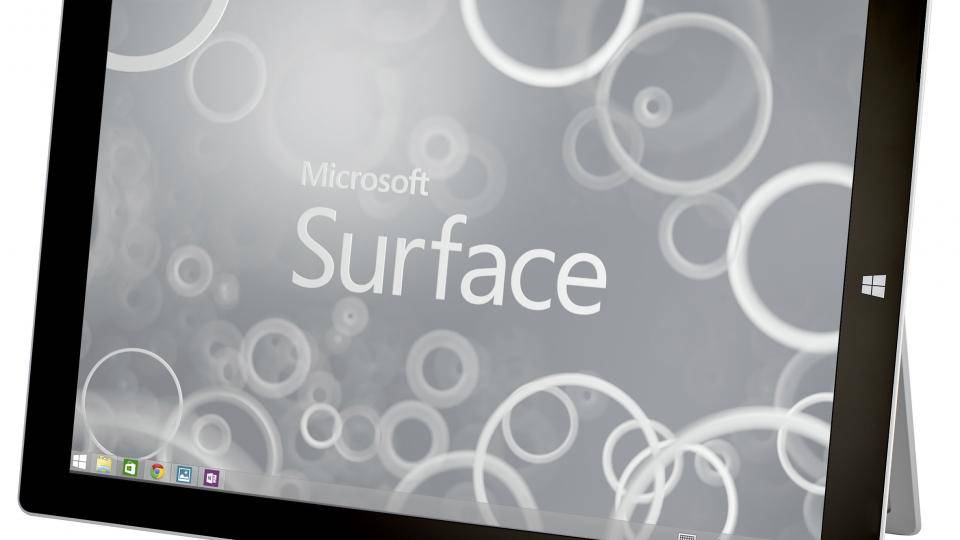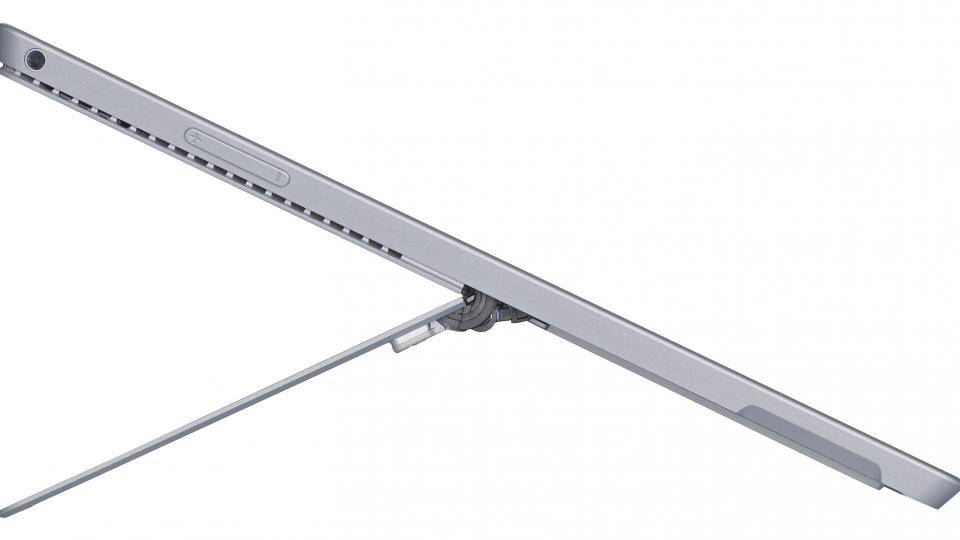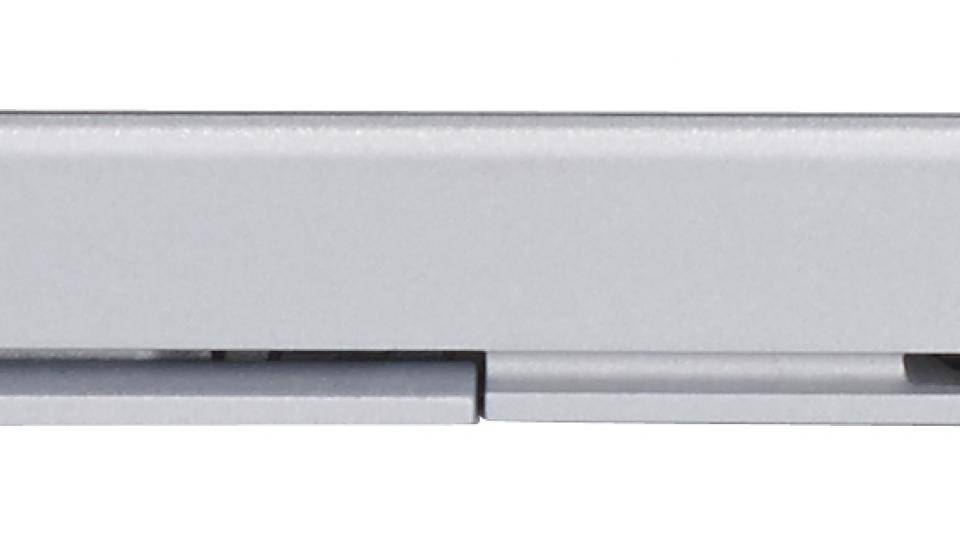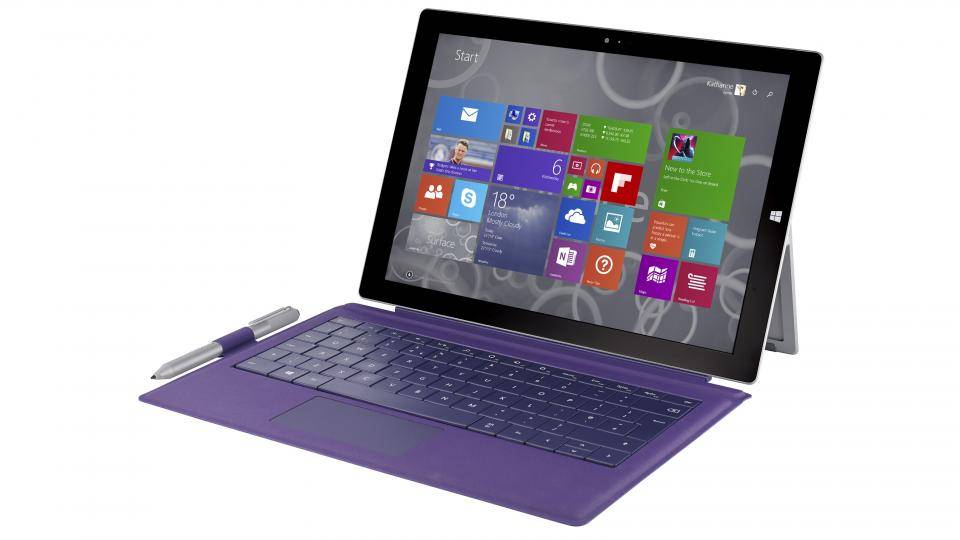Billed as the tablet that can replace your laptop, Microsoft's Surface Pro 3 has a lot to live up to. Both the original Surface Pro and the Surface Pro 2 were only partially successful at creating the ultimate two-in-one hybrid, as the first was hindered by poor battery life while the second still had a huge, chunky chassis that detracted from its overall portability. But if the first two tablets were testing the water, then the Surface Pro 3 is the real deal, as this is easily the best Windows tablet we've seen. Ideal as a hybrid device for home use, it's also all set for business applications, as discussed by our sister-site IT Pro .
The most obvious departure from its predecessors is the Surface Pro 3's huge 3:2 12in screen. This makes the tablet’s overall shape is much more akin to a sheet of A4 paper than a widescreen laptop, which is great for using the bundled Surface Pen but less practical for viewing two documents side-by-side. Microsoft manages to sidestep this problem, though, by giving the screen a massive resolution of 2,160x1,440, which equates to a pixel density of 216 pixels-per-inch. This isn’t quite as high as the iPad Air’s PPI of 264, but the desktop still looked razor-sharp.

Of course, more pixels doesn’t always mean a better screen on a Windows device, as we’ve had several issues with ultra-high resolution laptops in the past due to a lack of flexible scaling options, particularly for third-party programs. The Surface Pro 3 is set to scale to 150 per cent by default, but you can increase this to a maximum of 200 per cent if need be.
It’s likely you’ll need to use one of the scaling options, as we feel that setting the desktop to 100 per cent is too small to be practical for most. We certainly appreciated the extra work space, especially for third-party programs such as iTunes and Spotify, but we wouldn't want to work at this resolution for long periods of time. Text was so small that we often had to strain our eyes to read it most of the time, so we stuck with the default 150 per cent scaling throughout our testing.
^ The Microsoft Surface Pro 3's different scaling options give you varying degrees of desktop space. From left to right: 100%, 150% and 200%
Surprisingly, the touchscreen coped no matter what scaling option we were using, as it's exceedingly accurate in repsonse to your jabs and swipes. Even on 100 per cent, we were able to open and close internet tabs accurately, minimise windows and open programs by tapping the respective icon. Windows 8 gestures also worked perfectly, both on the tablet itself and Microsoft's new TypeCover keyboard (more on this below).
The quality of the Surface Pro 3’s Gorilla Glass-protected screen was equally excellent. Our colour calibrator showed it was displaying 93.7 per cent of the sRGB colour gamut, which is incredibly high compared to other laptop screens. Only the 15in Apple Macbook Pro , Dell XPS 11 , Dell XPS 15 and Toshiba Kirabook beat it on colour accuracy, and all of these are vastly more expensive than our review spec Surface Pro 3. The Surface Pro 3 also scored higher than Apple’s 13in Macbook Pro , so you can be sure this is one of the most accurate screens money can buy.

The screen’s overall brightness was also impressive, measuring 333.1cd/m2. This is one of the brightest readings we’ve seen, so you should be able to use the Surface Pro 3 even to work outside in the sunshine. The only downside to having the screen on full brightness is the presence of greyer blacks, as our calibrator measured a black level reading of 0.45cd/m2. This is a little higher than we were expecting and our solid colour image tests revealed that blacks were tinged with a very small hint of blue compared to the tablet’s deep black bezels.
Contrast was also fairly average, measuring 748:1. This meant very dark areas of shadow detail tended to get lost in our high contrast test images, appearing as simple patches of black. It's a shame this isn't higher, but it's still by no means bad and the screen’s viewing angles were superb. This is particularly important now the Surface Pro 3 has a much more flexible kickstand that can sit anywhere from 0 to 150 degrees. It would be no use at all if the screen suddenly darkened when you tilted it backwards, but fortunately we could see the screen clearly no matter where we positioned the kickstand.

As well as having a larger screen, the Surface Pro 3 is more portable than ever before. Weighing just 800g and measuring 9.1mm thick, it’s considerably thinner and lighter than the Surface Pro 2. This is quite a feat considering its larger surface area, and its beautifully smooth silver vapor-magnesium chassis only adds to that feeling of luxury. It's still almost twice as heavy as an iPad Air, though, which weighs just 469g, so you'll want to rest the Surface Pro 3 on your lap or on a table if you're using it for longer periods of time.
You still don’t get many ports with the Surface Pro 3, but there’s one full-sized USB3 port, a microSD card reader, a mini-DisplayPort for connecting it to an external display and a headphone jack. There’s also a volume rocker on the left hand side.

